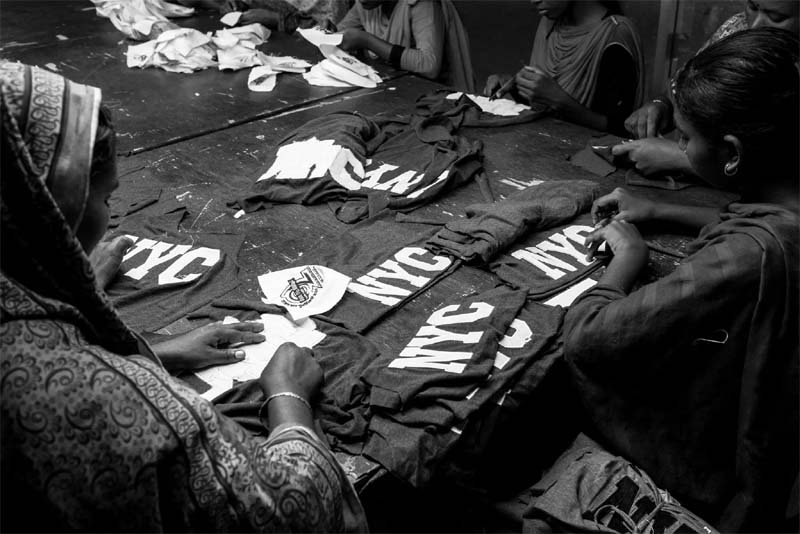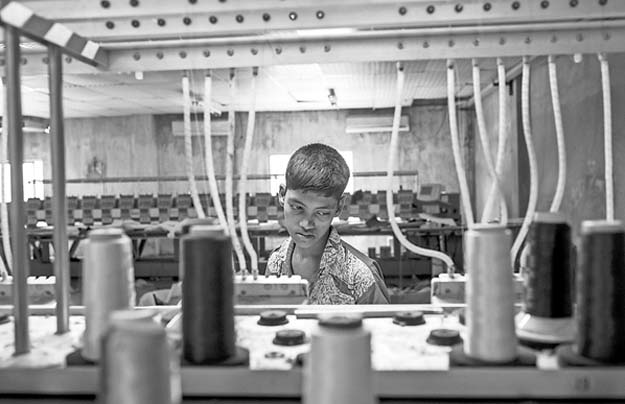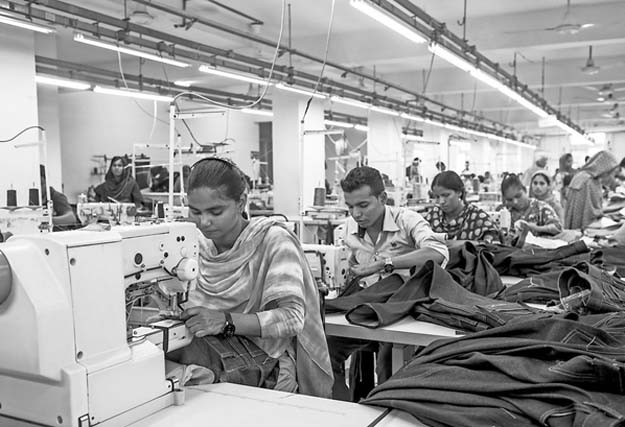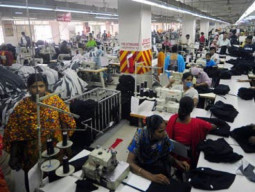
Mosammot Bulbuli is among the millions of people who work in Bangladesh’s factories that supply clothing to the rest of the world.
According to The New York Times, she is also one of the thousands who were working in Rana Plaza in Savar five years ago when it collapsed. More than 1,100 people lost their lives; more than 2,000 were injured.
The survivors recount that moment in the same way: The lights failed in the first few minutes of the morning shift; then the generators kicked in, noisily; the walls shook; the ceiling crumbled and fell. Then bodies were everywhere. Next, total darkness.
 PHOTO COURTESY: THE NEW YORK TIMES
PHOTO COURTESY: THE NEW YORK TIMESA few weeks later, some of the world’s largest retailers began signing an agreement with local unions regarding work safety standards.
Domestic labour: a stolen childhood
That accord has attempted to cast a light on dangerous conditions inside. Outside, in the industrial Savar area, factories, tanneries and dyeing plants — all crucial to the global supply chain — have been contributing to an environmental disaster.
Clogged with toxic waste, Savar’s wetlands, canals and streets have become breeding grounds for mosquitoes and disease. More than a million people live there.
Bangladesh, which is the largest exporter of clothing after China, is able to save on manufacturers’ costs by paying one of the lowest minimum wages in the world and by often turning a blind eye to the laws, agreements and standards that would protect workers and the environment but raise prices.
A complex set of laws and regulations, often flouted, allows different types of factories to operate according to different standards.

- PHOTO COURTESY: THE NEW YORK TIMES[/caption]
The problems are exacerbated by Bangladesh’s poverty, which drives millions of children away from school and into the labour force. They often lie to get around the legal employment age.
The pollution spewed by the factories is only getting worse as tanneries have been ordered to relocate to Savar from Dhaka, the capital, in an attempt to save the Buriganga River, a lifeline for Dhaka, whose water is thickening with pollution.
Labour activists decry exploitation of workforce
Bangladesh has a $1 billion tanning industry. Above, a tannery worker puts animal skin into a toner. Exposure to the mix of chemicals used to treat hides can cause serious health problems.
While many survivors of Rana Plaza that we met on our trip last year have found jobs at factories, some are still struggling for work and compensation. Others have made it their cause to help the victims.
Mahbub Hasan Ridoy, who was buried for 20 hours under the rubble, says he is the only one who survived from his department. When we met him, Ridoy was working at a pharmacy and was determined to keep a spotlight on the survivors. He said that the government “received huge donations. But where is the money?”

- PHOTO COURTESY: THE NEW YORK TIMES[/caption]
“They used the incident in Rana Plaza,” he said. “We need a thorough investigation.”
Mossamot Rekha Akhter had been working at Rana Plaza since she was 13. She injured her arm in the disaster and when we saw her she still couldn’t move it well. She said there are many things she doesn’t remember from that day. Her husband, Muhammed Saiful Islam, was also hurt in the collapse. He has dizziness and isn’t able to do work that requires him to stand for long periods.
Shilpi Akhter lost an arm in Rana Plaza; it was under a sewing machine when the ceiling collapsed. When we met her, her education was being supported by a Malaysian woman. Like Mossamot Rekha Akhter, she cannot remember much from that day.
Akhter said that she doesn’t dream of being a doctor or an engineer. Instead, she told us, “I have a dream of living on my own terms, being independent. I do not want to go back to garments ever again.”
The article originally appeared on The New York Times


































































COMMENTS
Comments are moderated and generally will be posted if they are on-topic and not abusive.
For more information, please see our Comments FAQ